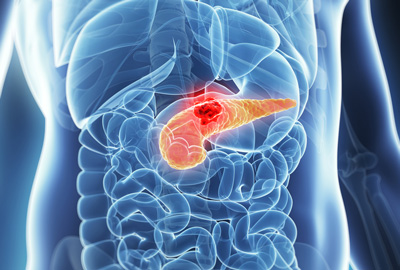INPP4B exerts its tumour-promoting effects via lysosomes
Posted: 31 October 2024 | Drug Target Review | No comments yet
Researchers have uncovered a how INPP4B, alongside PIKfyve and TRPML-1, drives pancreatic cancer metastasis.


Researchers at the University of Toronto, Toronto Metropolitan University and the Princess Margaret Cancer Centre have discovered new insights into the molecular mechanism that drives the aggressiveness of pancreatic cancer.
Leonardo Salmena, an associate professor of pharmacology and toxicology at the Temerty Faculty of Medicine at the University of Toronto, highlighted a key factor in the poor prognosis of pancreatic tumours: “Pancreatic cancer cells are known to be very metastatic and that’s a big problem.”
Led by postdoctoral fellow Golam Saffi and former master’s student Lydia To, the team found that INPP4B exerts its tumour-promoting effects via lysosomes, where biological polymers are degraded. They normally gather around the nucleus. However, the team observed that INPP4B drove the lysosomes from the cell interior to the periphery. Here, the organelles fuse with the cell’s outer membrane so the enzymes and other lysosomal factors responsible for breaking down cellular waste are deposited in the space around tumour cells.
Within this extracellular space is a network of proteins and molecules that provide essential structural support to cells and tissues and also restricts a cell’s ability to move. The stabilising network falls apart on the release of the lysosome’s protein-degrading contents into the space. Therefore, it is easier for pancreatic cancer cells to migrate to other tissues.
Furthermore, the team identified the signalling pathway by which the protein INPP4B drives the movement of lysosomes to the cell edge. Alongside two other proteins, PIKfyve and TRPML-1, INPP4B alters the lysosome’s surface structure and modifies local calcium levels.
Now, the scientists are testing two experimental drugs that target TRPML-1 and PIKfyve in a mouse model of pancreatic cancer. Also, they are continuing to study how the release of lysosomal contents can change the immunological environment of the cancer cells, as well as what effects that might have on the immune system’s ability to respond to the tumour.
During Salmena’s postdoctoral fellowship, he became interested in INPP4B when he found that it was involved in breast cancer. From that point on, he and his team have shown that the effects of INPP4B vary depending on the context, such as acting as a tumour suppressor in some breast cancer types, but having an activating role in other aggressive cancers.
Later, they demonstrated that among all cancers, INPP4B levels are highest in pancreatic tumours. High levels of the protein are associated with decreased overall survival in pancreatic cancer patients.
The study was supported by the Cancer Research Society and the Canadian Institutes of Health Research. It was published in the Journal of Cell Biology.
Related topics
Disease Research, Oncology
Related conditions
metastatic pancreatic cancer, Pancreatic cancer







